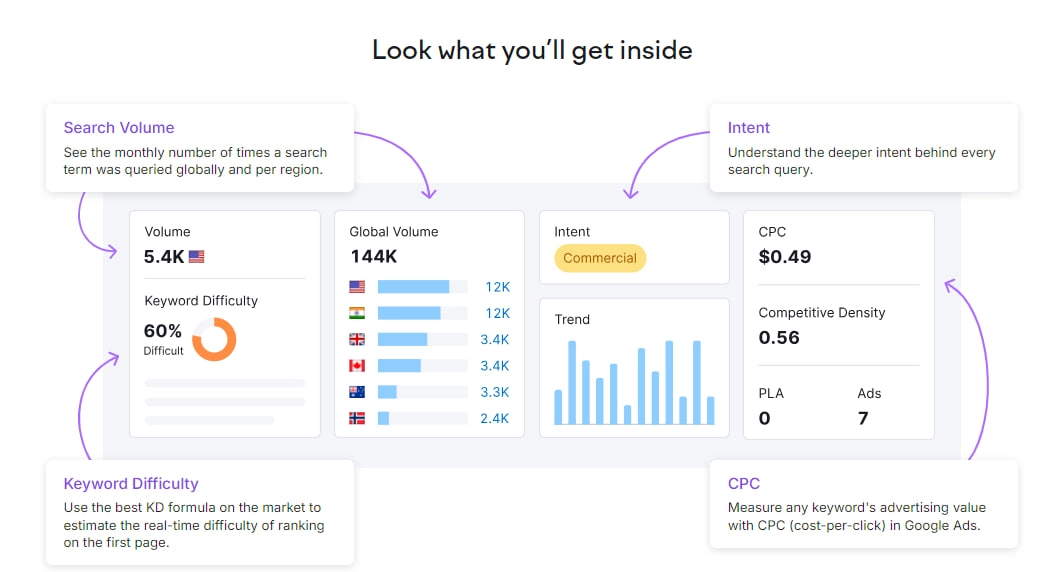So many flooring businesses are set up to fail in the competitive online marketplace. With so many businesses fighting for visibility, the right customers will simply never find you if your business doesn’t turn up in their searches. Poor keyword research translates into poor rankings in search results, missed opportunities, and a loss of potential revenues. Without a strategic way to research one’s keywords, a flooring company becomes lost amidst much noise.
In that case, effective keyword research, structured for the flooring industry, may prove to be the real thing. You can use key actionable insights about what customers are searching for to realign your website and content in tune with their needs, posing yourself as the ultimate solution. Below is a guide to explain how to conduct flooring keyword research and get the right customers coming your way while improving your rankings.
Why Keyword Research Matters to the Flooring Industry
Keyword research allows you to understand the words and/or phrases prospects type when searching for flooring-related products and services. By pinpointing high-value keywords, you will be able to develop your website content to better position your site in the organic search engine results pages so that customers can find you over the competition.
Step 1: Know Who Your Audience Is
First, understand your audience’s needs before delving into keywords. Your audiences could be:
- Homeowners seeking new flooring opportunities in renovations.
- Commercial establishments looking to renovate their floors for aesthetic appeal and durability.
- Contractors and estate agents who could potentially refer clients to your services.
Each of these will go about seeking flooring differently. Searches for homeowners may include terms such as “best flooring for pets,” while for businesses, they may be looking for “commercial flooring solutions.” Obviously, well-defined personas narrow down your keywords to fit the needs of each group.
Step 2: Develop Preliminary Keywords
Start to make a list of keywords associated with the products you sell and the services you perform. What type of flooring do you sell:
- Hardwood flooring
- Laminate Flooring
- Tile flooring
- Vinyl flooring
- Carpet options
Also, consider the variants like “hardwood floor installation” or “vinyl floor maintenance.” Long-tail keywords are usually 3-5-word phrases with only slight levels of competition; therefore, do not exclude their implementation in your targeted traffic efforts. Examples of long-tail keywords could be “best hardwood for pets” or “how to install tile flooring.
Step 3: Utilize Keyword Research Tools
Keyword research tools can give more about search volume, competition, and related keywords. A few of these tools work effectively:
- Google Keyword Planner: A free tool given by Google that gives data on search volume and competitiveness.
- Ahrefs/SEMrush: Although these two are not free, they give a great insight into the analysis of keywords regarding volume, difficulty, and phrase matches.
- Ubersuggest: It is cheaper but helps with ideas on keywords and scoring about their difficulty.

Take some of those starting keywords and toss ’em into one of the above tools to get an idea of their search volume and competitiveness. Flooring-related keywords that are high in search volume are a great place to start, but they can get pretty competitive, so it’s a good idea to also work in some less competitive keywords that are more niche.
Step 4: Competitive Analysis
Observe the websites of those competitors that do exceptionally well for the keywords related to flooring. This is because competitor research will outline keywords they target, showing the gaps in one’s content. Using tools such as Ahrefs’ Site Explorer or SEMrush Overview, one would be able to analyze the competitor’s keyword strategy, find ranking pages, and which keywords drive more traffic to the given page.
For example, if the competitor ranking was for “luxury vinyl plank flooring,” you should create similar unique content built on that keyword or any other related keywords, like “affordable luxury vinyl flooring options.” In this approach, you source ideas of what you are going to write about, and you peep at what brings traffic into your industry.
Step 5: Identify Local SEO Keywords
The flooring industry is usually locally oriented, so targeting local SEO keywords is usually one of the most important things to do. Use geo-targeted keywords with focused locations that you serve. Example:
- “Dallas hardwood floor installation”
- “Best Flooring Store in San Diego
- “vinyl flooring installers near me”
Local keywords will let you capture that audience that is actually looking for flooring services in your area. Plus, Google Keyword Planner will then help you sort the keywords by location to see what’s most popular in the areas you serve.
Step 6: Apply keywords including seasonal
Some keywords related to flooring may also be seasonal. Searches for “best flooring for winter” or “cooling tile options for summer” may peak at regular periods of the year. You can use this seasonal trending analysis to build timely content and promotional campaigns.
Use Google Trends to identify when during the year certain keywords are peaking in interest. For example, “hardwood floor installation” may peak in spring and summer as people are doing their home renovations. Adjusting your content calendar with these trends can help keep your site relevant and bring seasonal traffic.
Step 7: Search Intention-based Filtering of Keywords
Search intent is the goal or motivation a user has for conducting a specific search. Understanding this with accuracy would give one a good reason to develop content stating just that. In the flooring industry, it generally would include:
- Informational Intent – Users are trying to find something, like “best flooring for pets.”.
- Navigational Intent – When users want to find a specific website. For instance, users search for your business’ name.
- Commercial Intent: The user researches options before buying. Example: “vinyl vs. laminate flooring.”.
- Commercial/Transactional Intent: Users are ready to buy; that is, “buy hardwood flooring online.”.
Instead, aim for informational keywords through blog content and FAQs, before reverting to more commercial or transactional keywords in product and service pages. This addresses different intents, making your website more relevant to people at any stage of the customer journey.
Step 8: Make a List of High Priority Keywords
Now, sort the key phrases you have been gathering so far in order of search volume, keyword difficulty, and business relevance. Tabulate it using a spreadsheet:
- Primary Keywords: High volume yet relevant terms – like “flooring store near me” or “vinyl flooring installation.”.
- Secondary keywords: low volume supporting keywords, such as “best hardwood flooring brands.”
- Long-tail Keywords: These are detailed words that usually target specific niches, such as “eco-friendly flooring options”.
This will then be your basis for a content strategy in optimizing each page with the best matching keywords according to their purposes.
Conclusion
Keyword research in the flooring industry will help you outperform your competition by aligning your content with the needs of your targeted audience. By following each of the steps outlined above, you will be able to create a keyword strategy that will bring more targeted traffic to your website, enhance the quality of your leads, and consequently increase sales. Even better, you can reach out to a professional SEO agency with great experience in the flooring industry. With their help, all your keyword needs including local SEO for epoxy flooring companies will be catered to. Reach out for more details.



